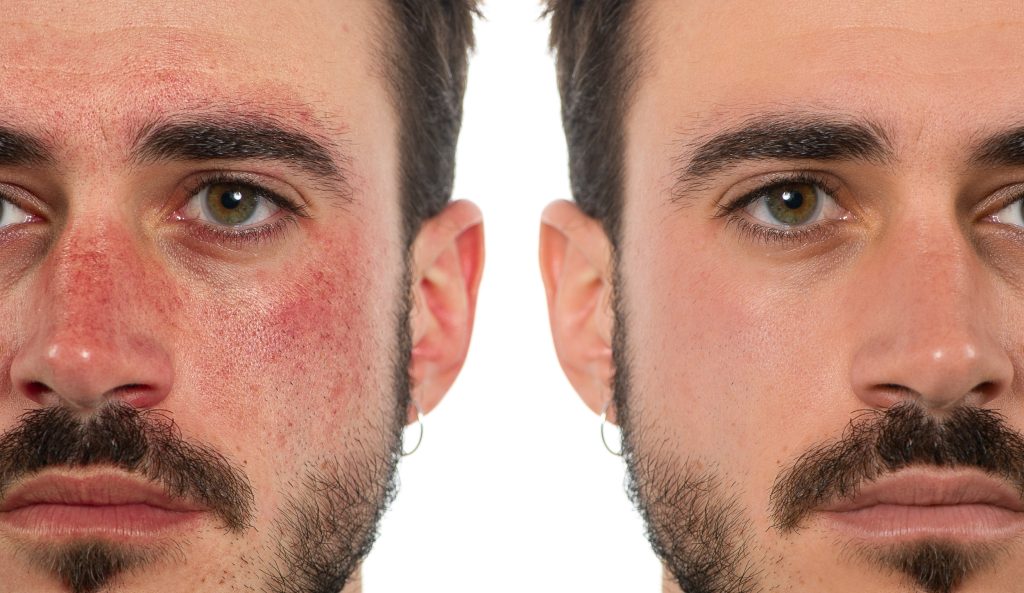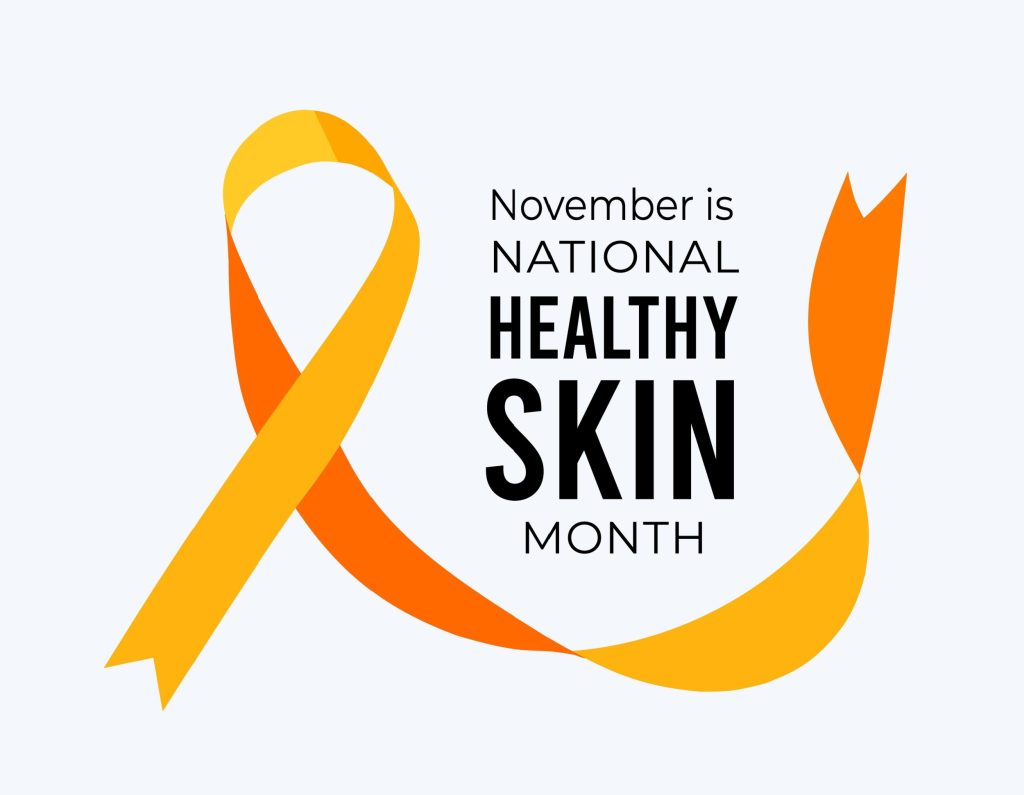
Spring can be a challenging season for those who suffer from rosacea. The combination of changing temperatures, increased sun exposure, and seasonal allergens can trigger flare-ups, leading to redness, irritation, and skin discomfort. If you struggle with rosacea, protecting your skin during the spring months is important to maintaining a calm and healthy complexion. The experts at Florida Dermatology and Skin Cancer Centers have put together a comprehensive guide to help you prevent flare-ups with practical tips and lifestyle adjustments for your rosacea. Keep reading to learn more about managing your rosacea in the spring.
How Spring Affects Rosacea
Rosacea is a chronic skin condition that causes redness, visible blood vessels, and sometimes small, red, pus-filled bumps on the face. It is often triggered by environmental factors, making spring a particularly tough season for managing symptoms. Here’s why:
- Warmer Temperatures: When temperatures rise, especially in Florida, people usually have an increase in sweating. Excessive sweating can lead to irritation and flare-ups.
- Increased Sun Exposure: Spring brings longer daylight hours and stronger UV rays. These can worsen rosacea symptoms, especially if you are not using proper sun protection. Using a daily sunscreen with an SPF of 30 or higher is recommended.
- Seasonal Allergies: Pollen and other allergens in the spring can lead to skin inflammation, increasing skin redness and sensitivity.
- Humidity Changes: Transitioning from dry winter air to humid spring conditions can disrupt your skin’s moisture balance.
With these challenges in mind, let’s explore how to protect your skin and reduce flare-ups during the spring months.
Protective Skin Care Routine for Spring
Adjusting your skin care routine for the changing season can make a significant difference in managing rosacea symptoms. Follow these steps for calmer skin:
1. Choose a Gentle Cleanser
Avoid harsh, foaming cleansers that can strip your skin’s natural oils. Instead, opt for a mild, fragrance-free cream or gel cleanser designed for sensitive skin. Look for ingredients like aloe vera, which soothes irritation; chamomile, which can reduce redness; and glycerin, which can help lock in moisture.
2. Switch to a Lightweight Moisturizer
As humidity levels rise, a rich winter moisturizer may feel too heavy. Instead, opt for a lightweight, hydrating formula containing ceramides to strengthen the skin barrier, hyaluronic acid to retain moisture, and niacinamide to reduce redness and inflammation.
Be sure to apply moisturizer immediately after washing your face to lock in and maintain proper hydration balance.
3. Prioritize Sun Protection
With increased sun exposure in spring, wearing sunscreen daily is essential. Choose a broad-spectrum, mineral sunscreen with zinc oxide or titanium dioxide, as chemical sunscreens can be irritating for sensitive skin. The SPF should be at least 30 or higher for daily use, while active use should be an SPF of 50 or higher. A tinted sunscreen can also help neutralize redness.
4. Avoid Heavy Exfoliation
Spring weather can make your skin more prone to sensitivity, so it’s important to avoid over-exfoliation. If you need gentle exfoliation, consider:
- Lactic acid or polyhydroxy acids (PHAs) for mild resurfacing
- Soft washcloths instead of harsh scrubbing
- Enzyme-based exfoliators for a less abrasive option
5. Keep Your Skin Cool
Overheating can trigger rosacea symptoms. Use cool water when cleansing your face, carry a thermal water spray for refreshing hydration, and avoid prolonged sun exposure during the peak hours of 10 a.m. and 4 p.m.
Lifestyle Adjustments to Prevent Rosacea Flare-Ups
Beyond skin care, making simple lifestyle changes can also help manage rosacea in the spring.
1. Stay Hydrated
Keeping your skin and body hydrated is key. Drink plenty of liquids like water and herbal teas to prevent dehydration and skin irritation.
2. Be Mindful of Outdoor Allergens
As we mentioned above, spring can bring an increase in pollen and other allergens that can irritate rosacea-prone skin. To minimize exposure:
- Wash your face after spending time outdoors
- Use an air purifier indoors
- Avoid touching your face with your unwashed hands
3. Dress for the Weather
Wear breathable, long-sleeved, lightweight fabrics like cotton to prevent overheating. A wide-brimmed hat and UV-protective sunglasses can also help protect your face from sun exposure.
4. Watch Your Diet
Certain foods and beverages can aggravate rosacea. Try to limit:
- Spicy foods – these increase blood flow to the skin
- Alcohol – can trigger flushing
- Hot beverages – encourages heat-induced blood vessel dilation
Instead, focus on anti-inflammatory foods like:
- Green leafy vegetables
- Omega-3-rich fish, like salmon and mackerel
- Hydrating fruits, like cucumbers and watermelon
5. Manage Stress and Sleep Well
Springtime activities can sometimes cause stress, which may worsen rosacea symptoms. Try to:
- Practice deep breathing or meditation
- Get at least 7-9 hours of sleep
- Engage in gentle exercise like yoga or walking
Spring doesn’t have to be a season of struggle for rosacea sufferers. With the right skin care routine, lifestyle adjustments, and protective measures, you can keep your skin calm, hydrated, and resilient against seasonal changes. By being proactive, you can enjoy this beautiful time of the year without worrying about rosacea flare-ups.
When to See a Dermatologist
If your rosacea worsens despite following these precautions, consider visiting a dermatologist like Florida Dermatology and Skin Cancer Centers. Specialized treatments from a dermatologist can help control your flare-ups more effectively and they can also recommend products specifically suited to your skin type.
About Us
FLDSCC’s team of providers are experts in diagnosing and treating skin cancers; skin conditions and diseases such as eczema, rosacea, dry skin, rashes, and warts; and chronic skin diseases and infections, while simultaneously tackling aging skin, wound care, and a multitude of other skin, hair, and nail concerns.
Several FLDSCC providers are fellowship-trained in Mohs micrographic surgery, an effective state-of-the-art treatment for most types of skin cancers. Mohs surgery involves minimal discomfort and encourages the greatest preservation of healthy tissue, which means less risk of scarring and superior cosmetic results.
FLDSCC has many convenient locations throughout the state. For more information, visit www.fldscc.com, or call (855) FLD-SKIN.


